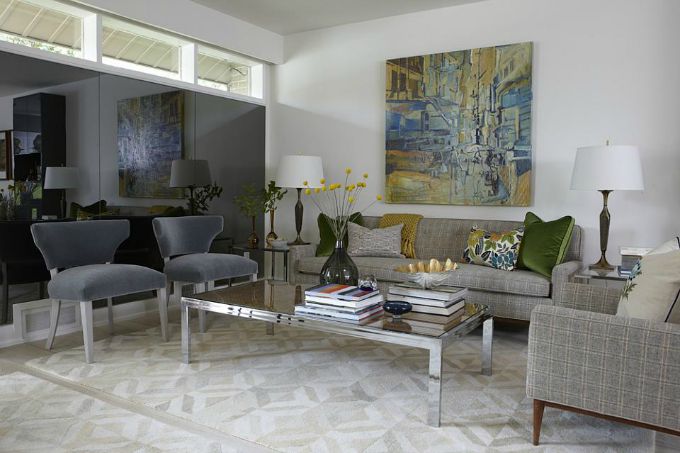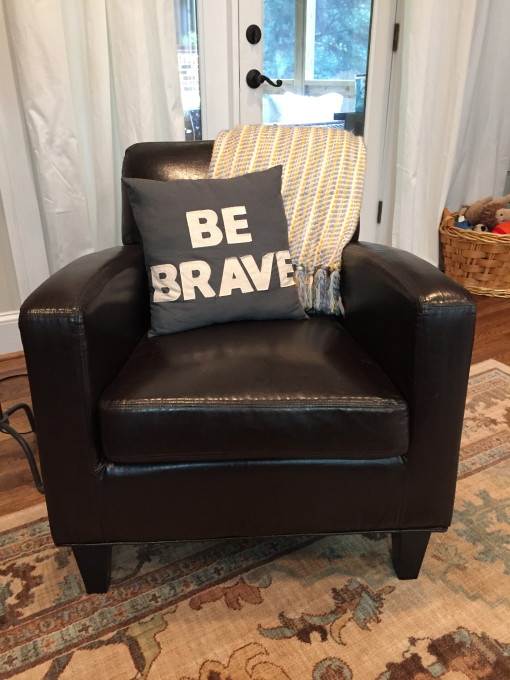Remember that show “Designing for the Sexes”? Every week, the host would talk to a couple who was stuck in a decorating dilemma. The woman wanted one thing; the man wanted another. By the end of the episode, he had a design that both could love.
So, how did he do that? How can you design a room for both sexes? Here are some tips:
1. Don’t try to be a mind-reader! ASK.
When I was designing our family room renovation in our old house, I assumed that I knew what my husband wanted in terms of the room’s design. When I think of “masculine” colors or design, I think of dark greens and blues, plaids, and leather chairs.

But when I actually asked my husband what he wanted, he showed me a magazine photo of an all-white living room, like this:

Bright, airy, open. Totally different!
The moral of the story: ASK your partner what he or she wants in the design. You might be surprised!
2. A little of this and a little of that.
Once you’ve gotten an idea of what you both want from the space, it’s time to start designing! They key is to add a little of what you like and a little of what your partner likes – that way, you’re both happy!
Take this living room:

At first, I really didn’t like this room design. I thought the plaid on the chairs and couch really didn’t go with the more feminine, floral and bright accents in the room. But what the plaid does is add something masculine to what otherwise would be a more feminine space. It creates balance.
In our home, I blend the more rustic and industrial touches that I love with the clean lines that my husband loves. The result works:
Clean lines in the chairs and mirrors. Rustic accents with the table and old tool box for a centerpiece. A rug that has light colors but also some earth tones. A little of this and a little of that.
3. Think style, color, and texture.
When designing a room for both sexes, don’t just think about design styles. Think about how you want the room to feel, which would include color and texture as well.

For example, we have this dark brown leather chair in our family room. If I were designing a room for just me, I wouldn’t necessarily have included a leather chair. But my husband has always wanted a leather chair.
So, I added a leather chair to our family room, but with a soft blanket draped over it and a comfy pillow. Then we have the texture of the smooth leather he likes, but mixed with a nubby throw and soft pillow that I like.
4. Kids are people, too!
Designing for both sexes isn’t just an issue for adults; kids share spaces, too.
If you have a daughter that likes pink and a son who likes blue (just to use traditional ideas here to illustrate the point), you have to merge those in a common space so they both enjoy it.
In our playroom (pictured above), I used yellow on the walls as a compromise between my daughter’s favorite color (green) and my son’s favorite (blue). I added blue and green throughout the room so that they both found their favorites.

The bottom line here is: talk to each other about the rooms in your home. I have found that women are always surprised by the men in their lives having an opinion about design. At the end of the day, we all just want to feel comfortable in our spaces.
How have you designed for both sexes in your home?










